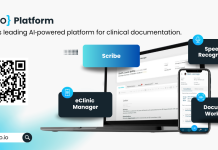A robust digital identity strategy underpins a resilient organisation, and it is paramount that the public sector takes this into account to achieve digital inclusivity
As online government services increase, more digital identity is based on verifiable credentials are created out of necessity to gain access to personal information and confidential data – from driver’s licenses to council, rent and car parking.
Digital services have a central role in our everyday lives. And with almost half of the people preferring to engage with government services digitally rather than physically, there is more demand than ever for the public sector to rapidly shift online.
However, legacy systems layered with new processes have made it increasingly challenging to provide a seamless experience, and allow citizens to gain access to the appropriate documents, applications and services.
Allowing citizens to gain access to the appropriate documents, applications and services
This widens the gap between those who are digitally literate enough to participate in society against those not as advanced, resulting in an inequitable and a disadvantaged community.
For those not proficient in digital literacy, managing an abundance of credentials can become too laborious for the account holder and damage the user experience.
However, there is hope – it’s possible for the Government to provide more centralised and frictionless user experiences that are accessible and enhance citizens’ trust.
Improving digital literacy to promote digital identity
With 14 million people (27%) still having the lowest level of digital capability, many struggle to interact with online services on a day-to-day basis. In line with this, the issue of digital inequality in the public sector has become more prominent as it continues to modernise on-premise operations.
The public sector must take the lead in enabling the creation and deployment of accessible and understandable e-services and content. It’s important that it facilitates a non-discriminative environment and ensures that e-governance closes the digital divide rather than widening it.

It starts with enabling internet access. The UK government recently enforced a law to ensure that new homes in England are built with gigabit broadband connection, allowing faster broadband for nine million people living in blocks of flats.
Such improvements in infrastructure are a good starting point in enabling citizens to significantly expand their digital capabilities, thus increasing access to required services.
The next step is improving digital literacy. Governments can empower citizens across the UK, and specifically from vulnerable groups that are disproportionately affected by digital transformation by hosting free training sessions at community centres, for example.
The foundations and infrastructure need to be built to account for everyone’s needs, not just a few
Whilst a small step, it can help users feel more confident when trying to navigate online services such as booking healthcare appointments or updating a home address.
To effectively move forward as a society, it’s vital that everyone can use new technologies as initiatives are rolled out to minimise the risk of social polarisation. Digital skills are key in enabling access to public services online, but the foundations and infrastructure need to be built to account for everyone’s needs, not just a few.
Making online access frictionless
People will naturally veer towards the path of least resistance, which is why it’s imperative that governments look to improve the user experience without introducing unnecessary friction. Each barrier between processes undermines the convenient aspect of turning to digital services.
For many citizens, for example, the elderly, complex systems and access management issues can lead to a lack of engagement with digital services.
To simplify the login process and give the appropriate people fast and secure access to the resources they need, government bodies have to really understand the way digital identity and authentication are baked into their processes from the very beginning – looking to technologies such as a single sign-on (SSO) as one solution.
Streamlining the process instead of having to re-register for multiple services, such as car parking, council tax, or rent benefits, can help people navigate digital services far more effectively.
Allowing individuals to use one login to access everything means the end-user can eliminate time logging in and trying to recall the correct account details each time they switch apps or sites. Not only does this make navigating digital services easier and safer for citizens, but public sector employees won’t have to spend time resolving general admin issues when it could be put towards higher value tasks.
But before this happens, a strong focus needs to be put on the role digital identity can take in helping IT and security leaders understand and specifically employ Zero Trust.
This works on the basis of not trusting anyone coming into the organisation until they are verified and access is ascertained, irrespective of their role – employee, supplier or customer. Having a centralised system that can offer immediate insight into activity within the network is essential in ensuring that no unauthorised user has access to information, protecting both the business and the consumer’s data.
And most importantly, not compromising on experience.

Boosting user confidence in data protection
As an authoritative institution, the public sector bears a strong responsibility to protect the information with which they are entrusted. Failure to demonstrate its ability to keep data safe and secure may result in losing the confidence of customers and the trust of the public.
It’s easy to fall into the trap of compromising security and resilience at the hands of accessibility. While the intention may be there to ensure operational efficiency, the rapid rise of cybercrime and ongoing transition to a hybrid workforce means leaders need to reassess how to verify users online while ensuring secure and easy access to appropriate data.
Legacy IT systems don’t cut it for modern day cybercrime capabilities and remain an obstacle to the public sector.
75% of public service leaders agree that technology architecture is becoming critical
It’s optimistic that 75% of public service leaders around the world agree that technology architecture is becoming critical to overall organisational success, yet most are aware that outdated technology is holding them back.
Unlike the new wave modern businesses, most government services and local councils are not ‘born in the cloud’. This means updating apps and services can often incur costs and drain resources, resulting in end-user frustration and disruption of operational performance.
Moreover, constantly having to manage the multitude of programs 24/7 in addition to user qualms places a huge strain on IT and security staff, potentially leading to higher turnover rates, while increasing the risk of human error.
Automating these menial and tedious tasks with an identity access management (IAM) solution will help accelerate internal processes for any organisation that aims to be agile and innovative, without damaging operational performance or the level of care citizens receive.
As it simultaneously simplifies the end-users access to various services, citizens are more likely to feel empowered and confident in the government’s digital capabilities.

Digital inclusivity relies on digital identity strategy
A robust digital identity strategy underpins a resilient organisation, and it is paramount that the public sector takes this into account to achieve digital inclusivity, nurture trust, and help protect the citizens that live within it.
Lessening the digital divide can only be achieved by making services more inclusive and accessible, and having a seamless approach to digital identity is key to this.
Success in the future will be found in businesses that prioritise innovation and adoption of new technology, while simultaneously ensuring that its people are evolving alongside their government body.
As an industry born to serve people, it’s important to meet them where they are and help raise their digital capabilities to a level where they can not only survive, but thrive in society. After all, identity is inherently personal and belongs to every single individual.
Governments therefore need to provide the experiences that empower and not polarise the people that they support.
This piece was written and provided by Ian Lowe, Head of Industry Solutions, EMEA at Okta.











